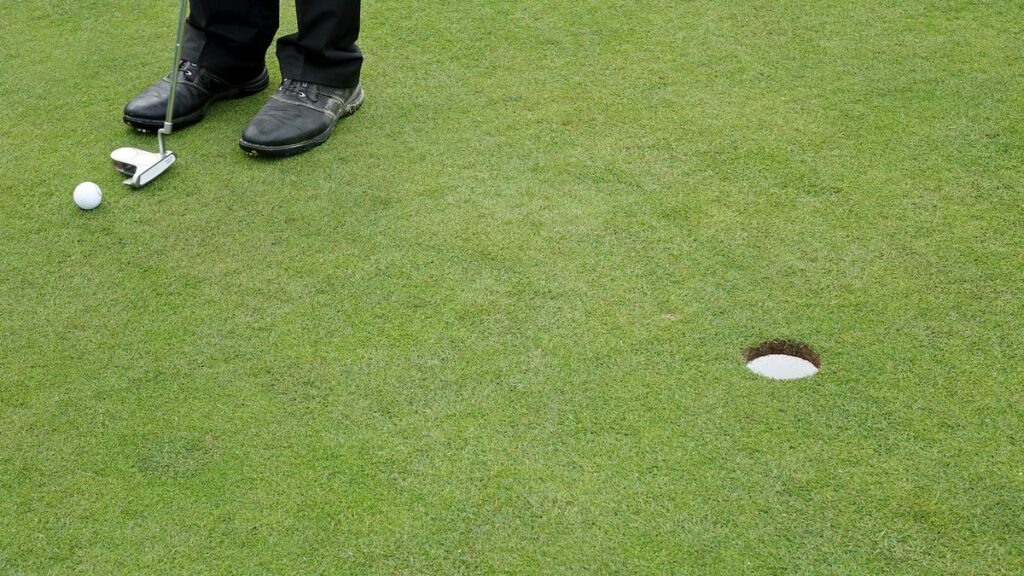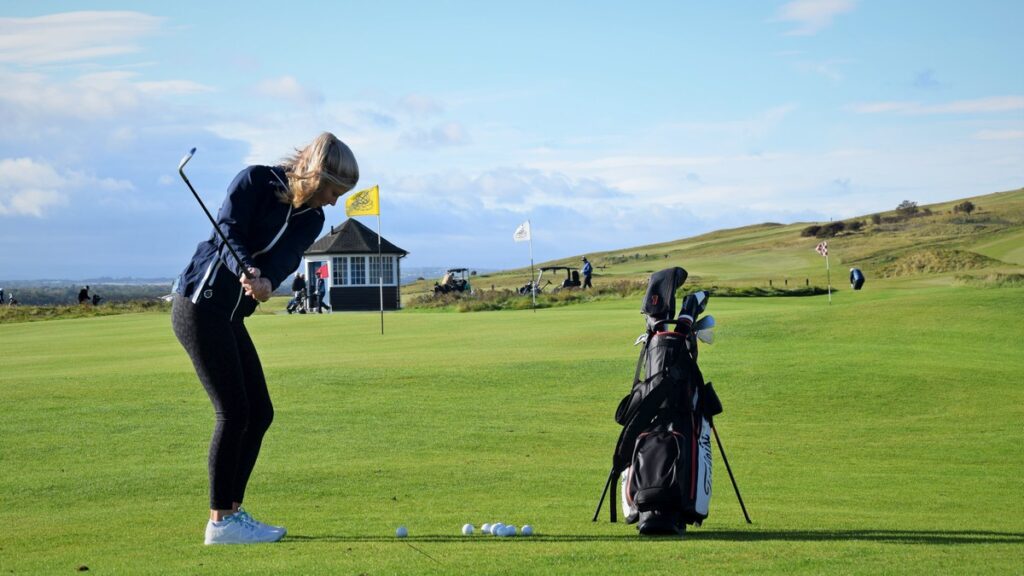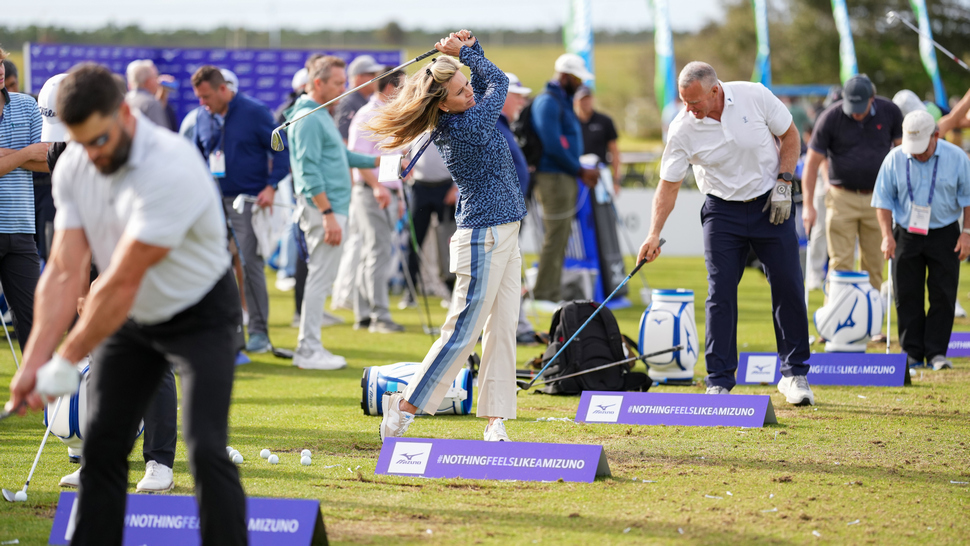Playing in a golf tournament is both exciting and nerve-racking, but there’s one crucial element that can set the tone for your day: the warm-up.
Whether you’re playing in a Saturday medal or county championships, warming up before a round of golf is essential for getting yourself in the right headspace and optimising your performance. By starting the day right, you set the tone for the round, so let’s dive into a step-by-step guide on how to properly warm up before a competitive round of golf.
Step 1: Arrive Early
Time management: You should always aim to arrive at the course at least one hour before your tee time. Extenuating circumstances can sometimes affect your arrival time, such as traffic, distance from the course and the time at which you’re teeing off, so it’s vitally important to plan ahead. Arriving an hour before your tee time allows you to ease into the day and take the stress out of your pre-round routine.
Mental preparation: It might sound silly, but if you’re looking to bring your best game to the course, use this time to centre yourself and get in the zone. Visualise your shots, be confident in your game plan, and engage in a bit of positive self-talk to manage any pre-round jitters. According to a study published in the National Library of Medicine, athletes who engage in mental visualisation often see improved performance due to enhanced focus and confidence.

Step 2: Hit the putting green
Your warm-up begins at the putting green. Now, this is a topic that’s hotly debated by golfers: whether to start on the range or the putting green. In my time as a competitive golfer, I would mix it up depending on the location of the amenities. If the range was a distance away, then I’d start there, so as not to find myself having to rush back to the first tee.
However, by starting on the putting green and working your way to the range, you gradually warm up to hitting your first shot, heading seamlessly from the range to the first tee.
Practising your putting before a round is all about building confidence. I would always recommend using three balls when practising, and if possible, use the same make and model that you will be playing on the course.
Get a feel: Start with some simple putts to get a feel for the putter and the greens. This can include rolling putts to different holes from different lengths without any kind of structure or routine. The main aim is to get you feeling more connected to your putter.

Distance control: Gaging the speed of the greens is a crucial part of preparations. While it might sound odd, putting is 90% pace, 10% line. If you don’t have the correct line but you have the correct speed, you’ll never be too far away. But if you’re rolling it five feet past or three feet short — and you’re also off-line — you’ll find yourself in a tricky position.
There are two sure-fire ways to help with distance control before a round. Number one is to practice rolling balls up to the fringe of the putting green from different distances. If it’s too fast, it’ll run through; if it’s too short, it won’t reach.
Number two is to find two holes roughly 10-12 feet apart, where one is slightly uphill and the other downhill. Start by using only your right hand, playing three putts uphill and three downhill, then swap to your left hand and repeat before finishing with both hands using your preferred putting grip. This helps to connect every aspect of the putting stroke and gain a good feel for the pace of the greens.

Short putts: Building confidence in your short putts is crucial before a round. The large majority of short putts that you’ll have on the course will either be for par, bogey or worse, so making sure to hole them will save you a heap of shots.
There are two quick and easy ways to practice your short putts before a round. The first is to place your balls around the hole — anywhere from two feet to five feet — and practice holing the putts from different angles. Each putt will have a slightly different break, helping to prepare you for the unpredictability of the course’s greens.
The second is to find — if possible — a straight putt. Place your balls on that line two feet, three feet and four feet away. Start by holing the two-footer, then the three and the five. However, you can’t move on to the next putt until you’ve holed the one before. The straight putt will help foster a good stroke and face angle — as without it you’ll miss the putt — and the structure of the routine will help to build consistency.
Step 3: Short game
Your short game is where many strokes can be saved, so it’s always best to get some chipping in where possible. A good scrambling day goes a long way to preventing high scores.
Chipping: Focus on chipping from various distances and angles, utilising different clubs for different shots.
Spend some time with your gap or sand wedge, getting used to shots that need a bit of loft. Then, move on to some bump and runs with a 9 or 7 iron, focusing primarily on roll and distance. Having a variety of shots in the bag is always useful, as you never know what you might face.
Bunker shots: If a bunker is available, take advantage of it. Hitting a few sand shots will help to familiarise yourself with the technique for when/if you find the sand trap. You might only hit one bunker shot in a round, so if you don’t practice it regularly, it’s easy to lose your touch.

Step 4: Hit the driving range
Finally, it’s time to head to the driving range. This is where you need to warm the body up, stretch and begin finding your rhythm.
Stretching: As golf isn’t a contact or high-intensity sport, people often think that stretching or an appropriate warm-up isn’t necessary. This isn’t true. Incorporating stretches and warming the body helps to improve flexibility and performance — swinging the club when your muscles are stiff is both restrictive and prevents fluidity in the swing. Focus on your back, shoulders, arms and legs, as these areas are crucial for a strong and rhythmic swing.
Warm-up swings: Begin with gentle swings to activate your muscles after stretching. Start easy, focusing on rhythm and rotation.
Pitch shots: Start by hitting pitch shots, paying attention to the ball’s trajectory and distance. It’s good to have an understanding of the swing you need for each distance. For example, 25 yards is a quarter swing, 50 yards is a half swing, 75 yards is three-quarters, and 100 yards is a full swing—these distances and swing lengths are just examples.

Work your way up: Work your way through the clubs, from wedges to irons to woods. You don’t have to hit every club in the bag, but this holistic approach helps you warm up all facets of your game.
Gain an understanding of your swing: Pay close attention to your swing mechanics and shots. What are you hitting well, what’s your miss/bad shot, etc? This will help you know your game before heading out, so you can incorporate it into your shot choices and course management.
Practice your opening tee shot: After finishing on the range, you’ll head straight to the first tee. Psychologically, it’s important to start your round with a good shot — so why not practice it? If the first hole is a par-4 or par-5, practice and visualise the shot you want to hit with the driver. If it’s a par-3, find out how far it is and practice hitting that shot with the necessary club. If it’s a dog-leg fairway, where do you want to hit it? What shot shape do you want to hit? This is a brilliant way to hit the ground running and start the round with confidence.
Additional tips for a successful warm-up
Hydration and food: Keep your body fueled and hydrated throughout your warm-up. Proper hydration and energy levels are key to maintaining focus and energy on the course.
Mental focus: Maintain a positive mindset. Reflect on your strengths and past successes to boost your confidence.
Warming up before a round of golf is a strategic approach to optimising your performance. By following these steps and tailoring your warm-up routine to your individual needs, you set yourself up for a more enjoyable and successful day on the course.
So the next time you prepare for a round, remember: take your time, warm up properly, and let the game come to you. With a solid routine, you might just find yourself playing your best golf.

